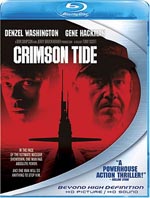
|
U-BoatLanguage:
SummaryThis documentary covers the role of the U-boat in various operational theaters of World War II, tracing the peaks and valleys of the arm's effectiveness. It includes some footage of the salvaged U-534 at Birkenhead. It also covers the role of the surface fleet and the Kriegsmarine's place among the other German armed forces in World War II.
NotesThis documentary contains a strong anti U-boat bias. Its tone is summed up in the final words of the narration, which describe the U-boat arm as Germany's most sinister and ruthless weapon, and it begins with the statement that the Germans entered the war with the intention to fight long, hard and deviously, as proven by their sinking of the S.S. Athenia in violation of international law and the practice of U-boat crews machine gunning survivors in the water (both statements false or incomplete). No coverage of comparable Allied actions is given to provide balance; this is clearly coming from a good guys-bad guys perspective.Besides the slant, the documentary is also marred by two other flaws. First, the narration contains historical inaccuracies in terms of statistics (incorrect numbers of ships sunk, etc.) and plain facts (e.g., stating the Blücher was "crippled" in the invasion of Norway when it was in fact sunk). Second, there is serious discontinuity between the visuals and the narration. Like many historical documentaries, most of the film is composed of cut-together newsreels, vintage training films, and propaganda films. While it is a common enough practice to substitute footage of one event when no footage of the event being described is available, this technique is used excessively here. Not only do the visuals not match the narration (the Barham is shown while the Tirpitz is discussed, contact mines are shown when the topic is magnetic mines), but the same pieces of footage are shown repeatedly. In some cases the footage does not match the narration at all, i.e. the qualities of German commanders are described while the footage is of merchant mariners in lifeboats. The result is a film that is confusing, misleading, and hard to watch. As a final example, American footage of the 1921 sinking of the captured World War I Dreadnought battleship Ostfriesland first stands in for the Royal Oak, and then appears later in the film with no clear relevance to the narration. On the positive side, the documentary does touch upon most of the major highlights of the U-boat war, and provides an overview of the changing technologies that caused the balance of power to shift continuously from one side to the other from 1939 to 1943. |






